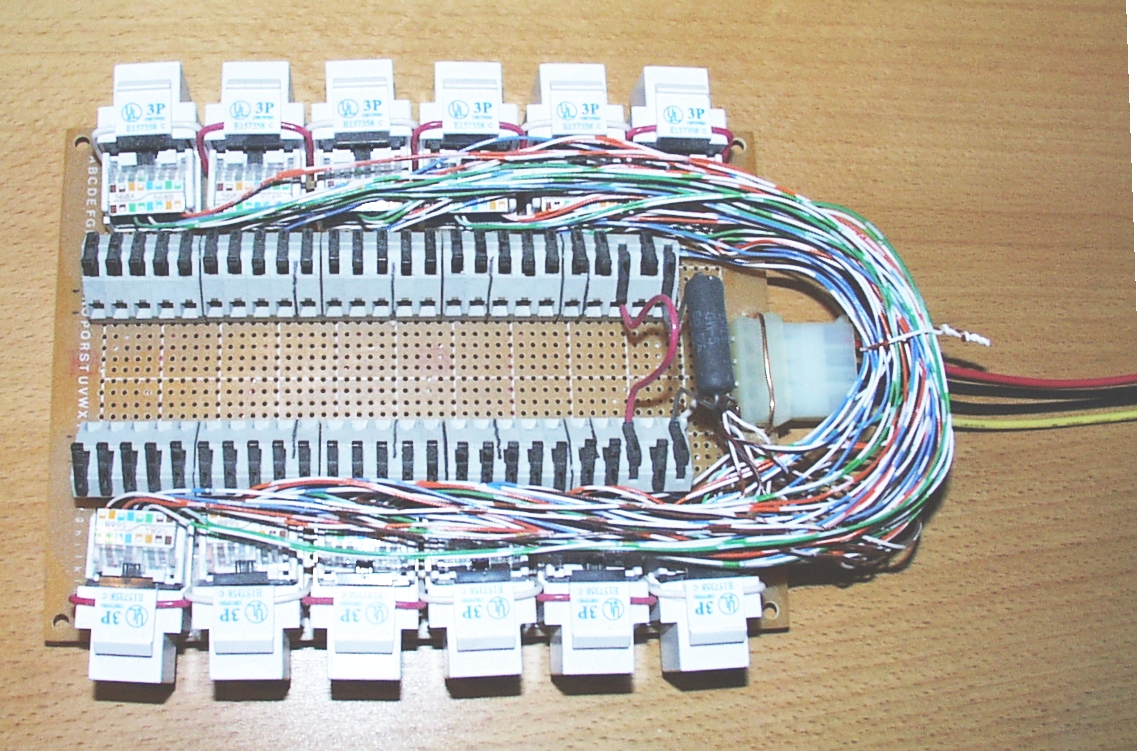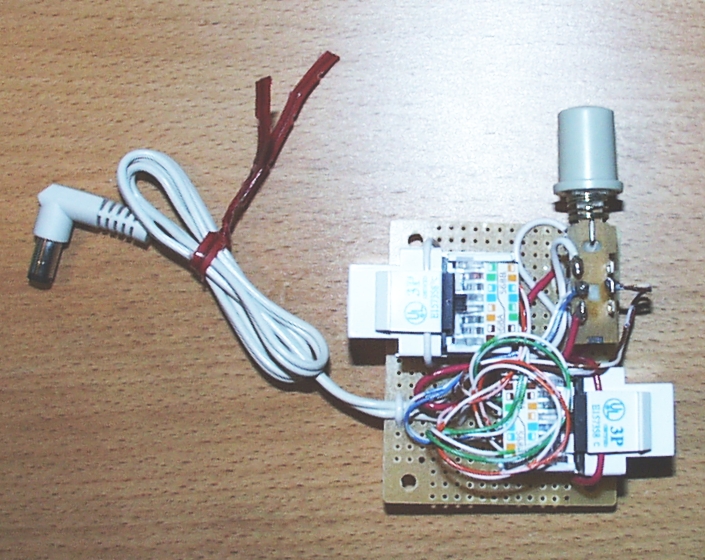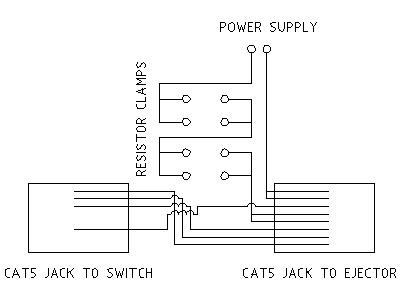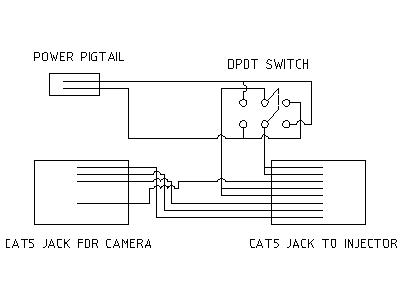 |
 |
 |
 |
 |
 |
 |



 |
||||||||||||||||||||
 |
Power Over Ethernet As you may know, part of the surveillance project was to use power over ethernet to power the cameras, rather than running both power and network lines to each camera. For a crash course, some genius figured out that since a standard cat5 network cable only uses 4 of the 8 wires, the other 4 could be used to carry power for low power network appliances....such as netcams. In short, here's the 'injector' for putting power into the Cat5:  And here's an 'ejector' to take the power out of the Cat5 and supply it to the camera:  Generally speaking, you can't use the power supply that came with your network appliance on the source end. The problem is that the wires you're dealing with are small and long, so you lose a significant amount of voltage by the time you get to your netcam. My cameras need 7.5 volts and pull about .68 amps. (Amperage was discovered using an amp meter; NOT by reading the specs.) You can estimate what voltage power supply you need with this handy POE calculator. However, I wanted a little flexibility. What if I moved a camera and needed to shorten the amount of cat5? Then I'd have to get a whole new power supply. So, I built my injector to run off of the 12v line on a PC power supply. And, I also built it so that each injected port had 4 clamps to slip in resistors, as needed, to bring the voltage down to what I need it to be for that particular line. The 4 clamps are wired so that there are 2 clamps in parallel which are in series with another set of 2 in parallel. Thus, I can mix and match resistors in there to land at the appropriate voltage drop. For my network cams, I know that the total resistance of the resistors and the cat5 lines must total up to 19.67 ohms so that the camera gets 7.5 volts. So, what I do is I run all the cable and get everything situated, then I tie the power wires together at the camera end and measure the resistance of the loop at the injector. Subtract whatever that reading is from 19.67, and that's the remaining resistance that I need to put into the resistor clamps. On the ejectors, I also included a polarity switch (a double-pole, double-throw switch) so that I didn't have to worry too much about preserving polarity along the way. I just hook everything up, then measure the polarity with my multimeter. If it doesn't match the polarity of the power supply that came with the camera, then I flip the switch. You can cut the pigtails off of your factory power supplies, but I had enough other old random power supplies with the correct pigtails that I cut those off instead, thus keeping my factory power supplies intact; lest I want to use them again on the cameras someday. For the network jacks on both the injector and ejector, I used cat5 keystone jacks. They're a little expensive, but they work really well for this. I had them left over from wiring my house, so that's why I used them. You might use cat5 couplers instead. You'd get 2 jacks per coupler, so, it'd probably come out cheaper. Here's the schematic for the injector:  And the ejector  The cat5 jacks in the schmatics are represented with the flat (non-tab) side facing you. Keep in mind that alot of the keystone jacks are not wired 'straight-through'. Use a multi-meter to test yours and discover which contact corresponds to which wire. Also, the schematic for the injector only shows one network line being injected. Just multiply that schematic out for as many lines as you need, connecting to the power lines in parallel. For figuring out what size resistor to use in the clamps, just remember from physics class that resistance in series is calculated as: Total
Resistance = Resistor1 + Resistor2 + Resistor3
and
in parallel:1/Total
Resistance = 1/Resistor1 + 1/Resistor2 + 1/Resistor3
So, if you need to put in 7.5 ohms in the clamps and all you have is 5 ohm resistors, put 1 resistor in the first set of clamps and 2 resistors in the second pair of clamps. Thus, you'll have 2 resistors in parallel which are in series with 1 resistor. The two in parallel will give you 2.5 ohms, and, added to the one in series will give you 7.5 ohms. Also make sure you get resistors that are rated for the kind of juice you're putting through them. (remember that watts equals volts X amps). That's really about it. Below is the parts list.
Have a comment or suggestion? |
 |
||||||||||||||||||
 |
||||||||||||||||||||
